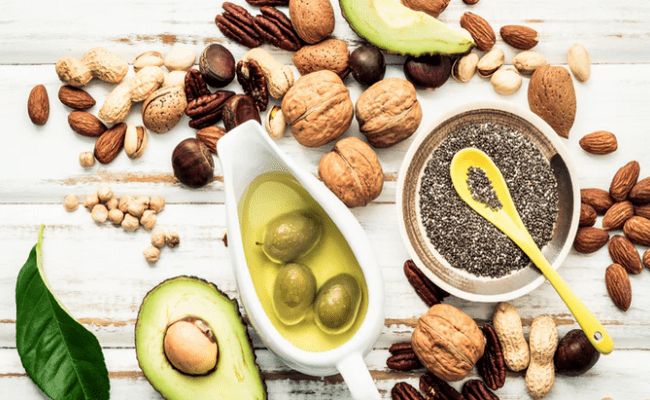Classification of Fats and Fatty Acids With Their Functions
Classification of Fats:
What is Animal Fat Called?
Animal fats are lipid materials that are derived from animals. Physically, fats are solid and chemically, fats are composed of triglycerides. Animal fat-containing mainly saturated fatty acid and glycerol. Fats are generally obtained from livestock animals like pigs, chickens, and cows. Dairy products also yield popular animal fats products such as cheese, butter, and milk.

Sources of Animal Fats:
It includes-
- Milk and milk product,
- Eggs,
- Meat,
- Fish,
- Cod liver oil,
- Halibut liver oil,
- Sea fish like salmon fish, dark fleshed fish, herring’s fish, and sardine fish.
What is Vegetable Fat?
Sources of Vegetable Fats:
It includes-
- Seeds of grounds,
- Mustard oil,
- Sesame,
- Coconut oil,
- Palm oil,
- Delta,
- Corn oil and so on.
Main Functions of Fat in The Body:
All the major functions of fat have listed in the following:
- It supplies energy (9 kcal/gm).
- It supplies essential fatty acids.
- It carries (act as a vehicle) fat-soluble vitamins– A, D, E, K.
- It provides flavor to food.
- It makes the food palatable and stimulates the secretion of digestive juices and thereby helps indigestion.
- It stimulates the secretion of the hormone enterogastrone and thereby reduces appetite.
- It stimulates the secretion of bile and so it acts as a cholagogue.
- Cholesterol is a component of hormones of the ovary, testes, and adrenal cortex.
- Phospholipids help in the formation of cell membranes.
- It provides support to the viscera.
- It protects cold-act as a cushion and insulator.
- It maintains the decency of the body and beautifies the body configuration.
Classification of Fatty Acids:
What are Saturated Fatty Acids?
Saturated fatty acids contain a single bond of carbon. Common saturated fatty acids are palmitic acid, stearic acid, and butyric acid.
What are Unsaturated Fatty Acids?
More questions related to this article:
- What is the classification of fats?
- What are the different types of fats?
- What do you mean by animal fats?
- What are examples of animal fats?
- What kind of fat is animal fat?
- What are the sources of animal fat?
- What are the sources of vegetable fat?
- What is vegetable fat made from?
- List some vegetable fat examples.
- What is the primary function of fat in the body?

Maria Khatun Mona is a Founder and Editor of Nursing Exercise Blog. She is a Nursing and Midwifery Expert. Currently she is working as a Registered Nurse at Evercare Hospital, Dhaka, Bangladesh. She has great passion in writing different articles on Nursing and Midwifery. Mail her at “maria.mona023@gmail.com”
